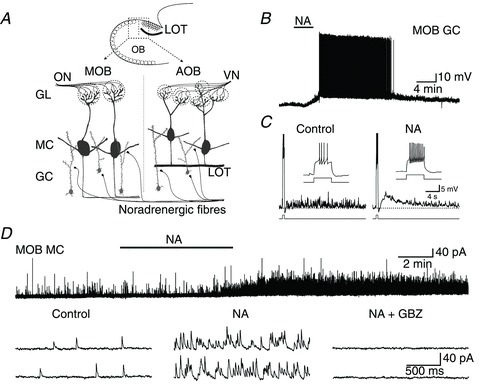Figure 1. NA increases GABA release in the MOB by exciting GCs.

A, diagram of a sagittal slice of the OB showing the relative positions of the MOB and AOB and neurons we recorded from. LOT (dark line) forms a boundary that defines the AOB. Sensory neurons relay peripheral information via the ON and VN to GL in the MOB and AOB, where they synapse with MCs (dark grey). GCs (light grey) form numerous dendrodendritic synapses with MCs, influencing their output through GABAergic inhibition. Noradrenergic fibres innervate both the MOB and AOB where they are thought to regulate dendrodendritic synaptic activity. In the AOB, the LOT separates GCs from MCs. B, recording from a GC in the MOB where bath application of NA (10 μm) depolarized the cell to threshold and resulted in several minutes of spontaneous firing (−60 mV resting membrane potential). C, in another MOB GC, NA (10 μm, 100 s application) produced a slow afterdepolarization following a stimulus-induced train of action potentials (65 pA, 500 ms). Shown are the responses to current pulses before and after application of NA with expansions of the stimulus-elicited spike trains displayed in the insets. Similar to NA-induced excitatory responses in GCs of the AOB (see text and (Smith et al. 2009), the peak of this slow afterdepolarization (ΔVm: 9 mV) occurred ∼3 s after the end of the stimulus pulse and had a slow decay. The dotted lines indicate the pre-stimulus membrane potential (control: −78 mV, NA: −68 mV; calibration bar: 3 s, 10 mV). D, top trace: recording from an MC in the MOB where NA (10 μm) dramatically increased the frequency of sIPSCs with a time course similar to that of the depolarization of GCs (control: 0.9 Hz, NA: 19.5 Hz). Bottom traces: representative sIPSCs from the above recording pre- and postapplication of NA (left and centre traces, respectively). This cell's sIPSCs were abolished by the GABAA receptor antagonist GBZ (right traces; 5 μm). The holding potential was 0 mV in this and all following voltage clamp experiments. AOB, accessory olfactory bulb; GBZ, gabazine; GC, granule cells; GL, glomeruli, LOT, lateral olfactory tract; MC, mitral/tufted cells; MOB, main olfactory bulb; NA, noradrenaline; ON, olfactory nerve; sIPSC, spontaneous IPSCs; VN, vomeronasal nerve.
